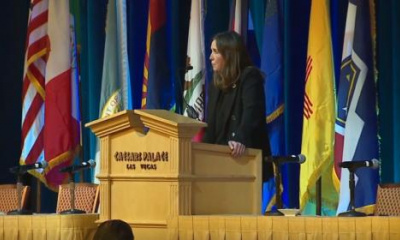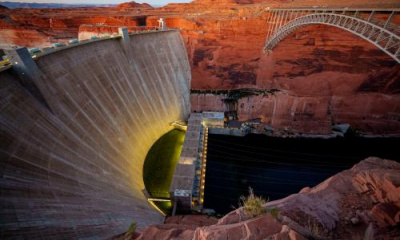MOAB, Utah — Journalists from radio stations, websites, newspapers and television attended the first Colorado River Collaborative at Utah State University's Moab Campus to learn what is happening throughout the Colorado Plateau.
USU Managing Director for the Janet Quinney Lawson Institute for Land, Water & Air Anna McEntire is a prime mover behind the collaborative and has learned first-hand how the river affects the rest of the region it sustains.
Watch the video on YouTube
"Our job is to help create that connection between our researcher expertise and people who can use that information to make good decisions," said McEntire. "It's not just a southern Utah issue, anyone who drinks water in Utah should care about what happens to the Colorado River."
A contributing factor for the shrinkage of the Colorado River in northern Utah has been Utah's Transbasin Diversion programs; a series of reservoirs, tunnels and underground aquifers that divert water that would otherwise drain to the Colorado River to be pumped into the Wasatch Front instead.
According to Great Salt Lake Commissioner Brian Steed, the Wasatch Front has historically been part of a separate water system region known as the Great Basin.
"The problems we're facing on the Colorado River, and the problems we're facing in Great Salt Lake, are very similar," said Steed. "And they're in part connected because we have that Transbasin Diversion between the Colorado and the Great Salt Lake."
The water management has origins dating back to 1922 with the Colorado River Compact, which was made to guide the river's management that is shared between seven states, Mexico and 30 native tribes.
The compact expires at the end of next year.
"From a policy standpoint, it's complicated. And trying to make sure that we have sufficient water for people, but also living within our means. Those means include the various natural needs of the system," said McEntire. "It's going to be the challenge of our day. I think we're up to it. But I think that we also can't ignore it."








